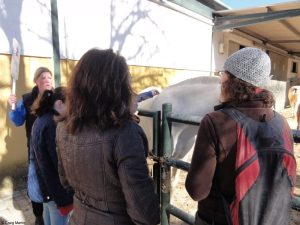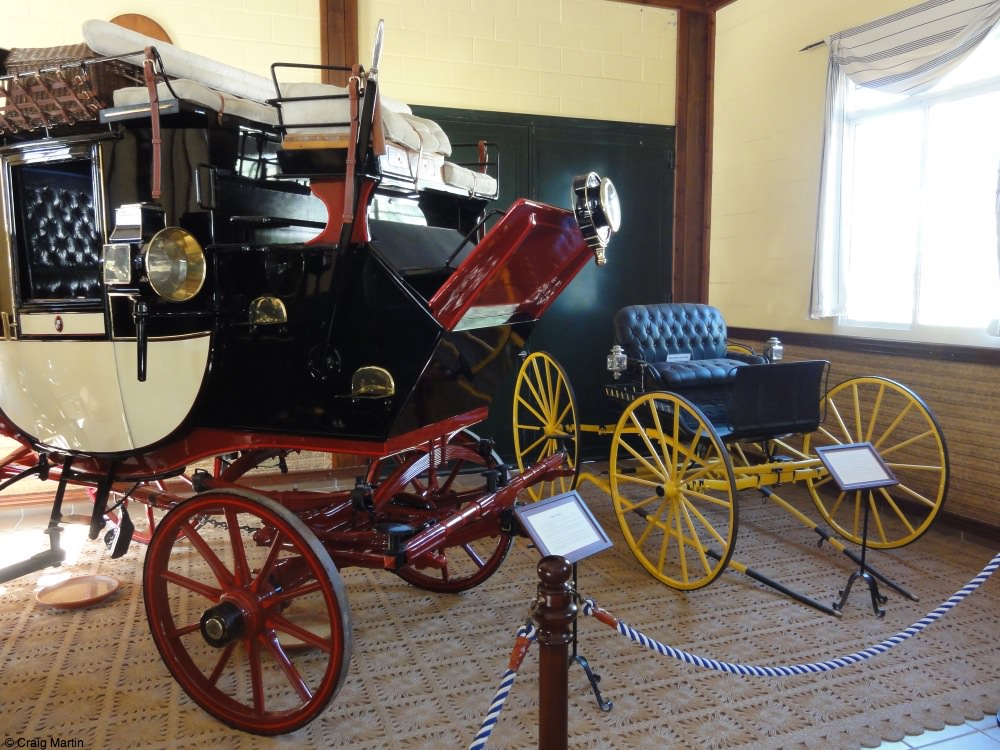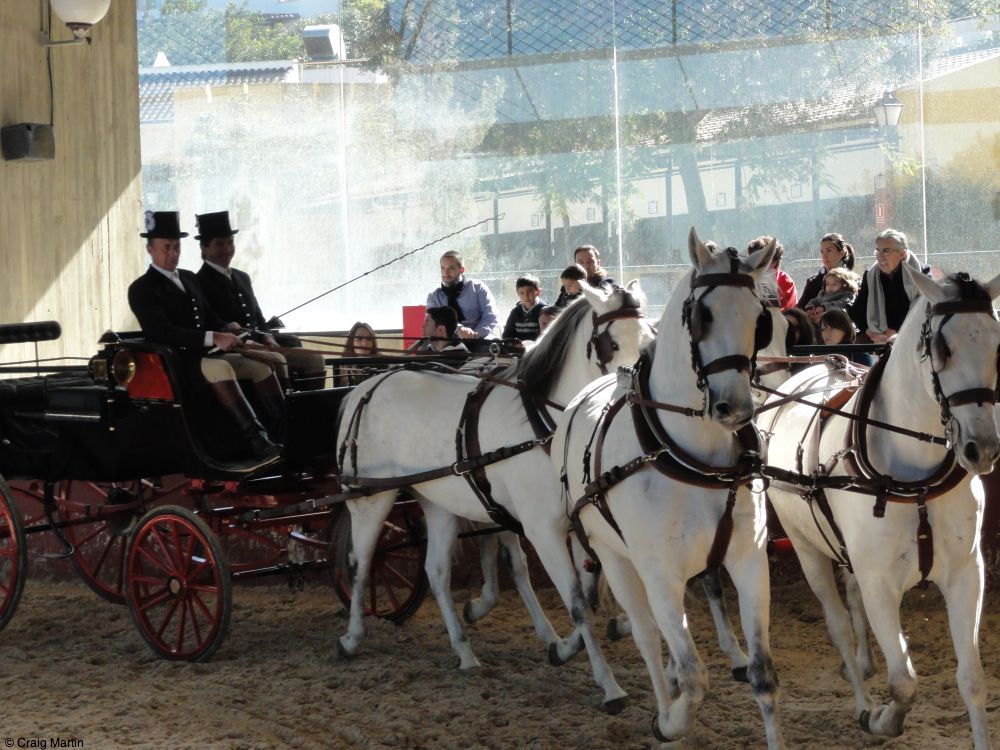Yeguada de la Cartuja, Jerez
Jerez is known for three things: wine, flamenco and horses. And while we’re completely in on the wine, the other two aspects of Jerezana life have almost completely passed us by. That is, until this weekend, when the Yeguada de la Cartuja reopened — it closes for a couple of months over winter.
It’s not the only horsey activity in the city: a couple of wineries do horse shows and the Royal Riding School has a show once a week that doesn’t have a seasonal pause. But the Yeguada had come recommended, and we decided to visit on the first Saturday of the season — our last Saturday in Jerez.

There were several stops on the tour, which took about 45 minutes, including a visit to the pregnant mares and the foals, who came up to the fence for a stroke. We passed the sperm bank and saw the sperm-collecting apparatus — apparently they collect almost a litre of sperm whenever it’s used. Next, we saw the treatment and operating rooms, where three vets work full time — with 300 horses, there’s plenty of work for them. We also visited the carriage museum and stopped to talk to a couple of mares along the way.

After a ten-minute pause in the sun, music called us into the arena, where the show started just after 12. What followed was an hour of beauty: horses stampeding, dancing, working in lines, pulling carriages. I especially liked the stampede of colts which started the show; and also when the group of this-year’s-births didn’t quite get the signal to leave and milled around on the sand looking for food. Their trainers had to come back and round them up — it was brilliant.
Price: €15.50 or €21.50, depending on seating
Duration: 2.5 hours
Hours: Saturday 11am
Address: Carretera Medina el Portal Km. 6,5. Jerez
More info: yeguadacartuja.com
[/box]
After the show, we were all invited to have a glass of sherry, but no one seemed quite sure where to go to collect it. We followed a group of Barcelonans back to the carriage museum before realising we needed to go to the large building opposite the shop. After our tipple (a choice of Solera cream wine or Tio Pepe fino), we headed back to the central patio where we had a quick ride in one of the carriages that had featured in the show — everyone was invited to have a go but only about 30 people took them up on their offer.
In total, the visit lasted about 2.5 hours, with an hour of show. We really enjoyed it, and if you have your own transport it’s a great activity to do during your stay in Jerez or Cadiz. Even though we have very little interest in horses, we loved it. The lack of public transport options make it a little difficult to get to for the casual traveller — and a €25 taxi ride each way added to a €21.50 entrance fee (or €15.50 if you choose cheaper seats for the show) makes it a pretty expensive excursion. However, Free City Tour apparently offers a package for €35 that includes transport, entrance to the Yeguaga, and a visit to the nearby monastery — certainly a good option for indie travellers which represents value for money.
